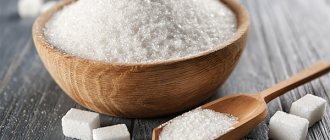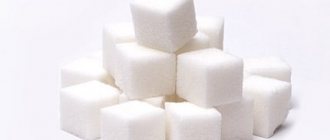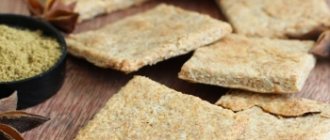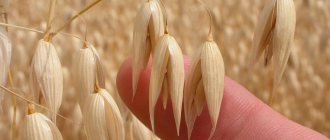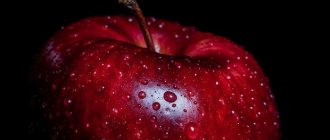No time to read? All text in a minute
- Consuming fructose as a sweetener is hazardous to your health.
- Regularly consuming fructose-containing foods is the same as binge drinking - the effect on the liver is similar.
- Fruits do contain fructose. Fruits are natural, but toadstools are also poisonous? The fruits are, of course, not poisonous. But their benefits and naturalness are greatly exaggerated.
- The products typically use fructose powder or fructose syrup (fructose-glucose syrup, glucose-fructose syrup). These are toxic ingredients and should be avoided – always.
Is it good to eat fructose for weight loss?
The same situation applies if a person is trying to lose weight. Indeed, if you follow the measure, it is better to replace sugar with fructose. But if you use it without control, then you can only get better.
The main benefit of the sweetener is that it does not provoke a sharp spike in insulin and is much sweeter than sugar, so less is needed. The main disadvantage is that it does not give a feeling of fullness, so dishes containing it can be eaten in larger quantities, which is very bad for those losing weight.
What is fructose?
This is a monosaccharide that does not break down into simpler components, the simplest source of carbohydrate energy.
The formula of fructose is the same as the formula of glucose – C6H12O6. These are isomers, that is, compounds with the same atomic composition, but at the same time different in structure and arrangement of atoms in space. Because of this, they behave differently in the body.
Glucose and fructose: what is the difference
Glucose gives a feeling of fullness and energy, increases blood sugar levels and, accordingly, insulin (in healthy people). Injures blood vessels, nerve cells, increases inflammation in the body. 1 g of glucose contains 3.4 kcal.
Fructose does not affect blood sugar and does not interfere with insulin; it gives foods a sweet taste - sweeter than glucose. Calorie content of fructose – 3.96 g.
The benefits and harms of fructose instead of sugar
Which is healthier?
Each substance has its own limitations, primarily regarding quantity. Excessive consumption (more than 50 g per day) can be harmful to health. But if you have to choose between two carbohydrates, then fructose is preferable. The best source of the substance is fruits and berries, since in addition to the sweet compound they contain many other useful components.
Is it possible to give children fructose instead of sugar?
The substance is harmful only in large quantities in food. It is preferable to give fruits or dried fruits to sweeten dishes. If we talk about replacing sugar with simple carbohydrates in reasonable quantities, then it’s possible. It cannot be added in a 1:1 ratio to food for children - this will cause the child to get used to the overly sweet taste and become unwilling to eat natural foods without sweeteners.
Can fructose be substituted for sugar in baked goods?
Yes, you can. The monosaccharide is not afraid of high temperatures. It dissolves well in liquids (water, milk), and is suitable for baking. Yeast ferments this carbohydrate, you just need to recalculate the amount in the recipe (reduce by 1.7-1.8 times). When baking muffins, they are slightly smaller in volume because less ingredients are physically added. The product must be baked with natural sweetener at lower temperatures, otherwise the crust will be too dark.
Why is fructose dangerous?
“With fructose,” the product label for diabetics happily tells us. There is no insulin response to fructose, so it is considered a safe sweetener for those who need to monitor their blood sugar levels. And then what harm can we talk about from fructose?
If glucose can be used by all cells of the body, then only the liver deals with fructose. This organ can use very small amounts of fructose. He puts off everything else until better times (or rather worse, when energy is urgently needed). With excessive consumption of fructose, hepatosis develops - fatty liver. Later – cirrhosis. Just like alcoholics, but a little faster.
When a person consumes a lot of fructose, triglycerides in the blood increase (more than from glucose). Visceral fat, the fat that surrounds the internal organs, begins to grow. A person with this type of obesity may be thin but look a little (or a lot) pregnant.
In diabetes, the body makes no (or very little) insulin, the hormone that is supposed to send glucose into cells. Diabetics have to take insulin to keep their blood sugar levels normal. Unfortunately, instead of being advised to avoid carbohydrates, diabetics are taught to time their insulin levels for sweet foods, and fructose is offered as a healthy alternative to sugar. But this only makes their problems worse. Many people with diabetes cannot lose excess weight for years, and they often develop cardiovascular diseases.
Fructose – is it harmful for a healthy person?
The presented monosaccharide, like any other substance, also has harmful properties:
- excess leads to excessive formation of lactic acid, which can lead to gout;
- the long-term consequence is the development of hypertension;
- may cause the development of liver pathologies;
- an excessive amount leads to inhibition of the production of leptin, a substance responsible for the feeling of fullness from eating food (this can cause the development of an eating disorder such as bulimia, when a person constantly wants to eat);
- blocking leptin also leads to excessive food consumption, and this is a direct factor in the development of obesity;
- fruit sugar in increased dosages sharply increases the level of “bad” cholesterol in the blood;
- administration for a long period develops a disorder such as insulin resistance, which leads to diabetes, excess weight, and vascular diseases.
What foods contain fructose?
Even if you pass by the obscurantism in the diabetic section of the nearest supermarket, there is a chance that you are consuming more fructose than our liver can handle. Fructose is found in:
- Sahara
- Syrup (agave, maple, corn, Jerusalem artichoke, date)
- Möde
- Starchy vegetables and root vegetables
- Fruits
- Industrial sweets
Many “healthy,” “sugar-free,” “fitness,” and “diet” products contain “natural” fructose.
Please note that manufacturers of “healthy sweets” are very fond of this “natural sugar” (as we remember, it is cheap). Therefore, fructose can often be found in “healthy desserts” not for diabetics. Moreover, usually on the packaging it will be written in large letters “without sugar”, “naturally”, “with stevia”, and only a keen eye will detect harmful fructose in the composition.
If fructose is common in desserts (remember, it's cheap and sweet), then you probably wouldn't expect to find it in your cat's food (yes, it's not good for animals either), much less in baby food.
Buildings made from bricks
Lactose is a disaccharide consisting of galactose and glucose. It tastes almost not sweet, and therefore the milk is not sweet either, although each glass contains about 2 spoons of lactose sugar (8-10 g). In the digestive tract, it breaks down into the original “building blocks” - galactose and lactose. And they are already absorbed into the blood. Disaccharides are not absorbed. If a person does not have the enzyme lactase, which breaks down this milk sugar, it begins to ferment in the intestines, causing flatulence (excessive gas formation) and diarrhea. This is lactose intolerance.
Sucrose is the most famous sugar. Even if this chemical name is unknown to you, you know it very well and consume it almost every day. This is the same “white death” that is sold in the form of sand or pieces of refined sugar and which is added to tea, coffee, porridge, and used in cooking. We simply call it “sugar.” This is a common name. The “ose” particle at the end of sucrose in the language of chemistry means that this substance belongs to sugars. Remember the names of other sugars: glucose, fructose... It is from these two “building blocks” that ordinary sugar consists, and it breaks down into them during digestion.
Question answer
Is it possible to completely give up sweets? Maltose is a less familiar disaccharide. It consists of two identical “bricks” of glucose. It got its name from barley malt (malt), which contains the most of it. Fans of real Scotch whiskey probably already think that this drink contains the most maltose, because Single malt whiskey is made only from this malt. In fact, maltose does not reach either the barrel or the bottle. A significant part of it disintegrates during fermentation, and the remainder goes to waste during distillation. But it’s in beer (it’s not distilled). And we consume the most maltose in beer and products with added malt (most often baked goods).
There are also polysaccharides - long chains of glucose “building blocks”, branched and tangled. This is starch, it is found in plants. Animal starch synthesized in the liver is called glycogen.
And if these “bricks” of glucose are connected in such a special way that our enzymes cannot separate (digest) them, then this is already fiber (cellulose) - dense dietary fiber. They make up the membranes of plant cells, which play a useful role in digestion. They trap some toxins and harmful substances, and without them we would suffer from severe constipation.
Table. Glycemic index and degree of sweetness of different sugars
| Name of sugar | Glycemic index (GI) | Sweetness |
| Maltose | 105 | 32,5 |
| Glucose | 100* | 74,3 |
| Sucrose (table sugar) | 65 | 100** |
| Lactose | 46 | 16 |
| Galactose | 23 | 32,1 |
| Fructose | 19 | 173 |
Note: * Glucose GI is taken as 100, all others are assessed in comparison with it
** The sweetness of sucrose is taken as 100, and the sweetness of other sugars is compared with this standard
Is fructose in fruit dangerous?
Fruits on a keto diet are a stumbling block. Some say goodbye to them forever, others cannot imagine summer without watermelons. In fact, it all depends on the source data. If you are not significantly overweight, play sports and are generally active, then an apple (one of the record holders for fructose) will not ruin you. The main thing is to limit yourself to the same apple and not every day.
Those who came to keto with serious visceral obesity, insulin resistance or non-alcoholic hepatosis of the liver should be more careful with fruits.
Fruits are natural candies. Are they natural? It depends what we mean by that. A modern store-bought apple is as different from a wild one as the Jenner-Kardashian sisters were before plastic surgery. They were available only in season, for residents of our region this means late summer - early autumn. This is a great time to eat some fat, which will save you from hunger and cold in winter. Today we are dealing with much sweeter fruits, and the need to make winter stocks has more or less disappeared.
Factor #4: Quality of research, or who was experimented on
Frankly, the quality of the research conducted to date leaves much to be desired. Scientists themselves admit that they do not fully understand the mechanisms by which fructose can negatively affect human health, for example, cause insulin resistance.
Most experiments were carried out on rats and other animals, whose metabolism is significantly different from that of humans. At the same time, the poor animals were simply fed fructose. Not surprisingly, excess fructose caused them lipid profile abnormalities, insulin resistance and other problems.
Moreover, in the experiments, the subjects were given only fructose, which in real conditions is very rarely consumed in isolation - without glucose. Therefore, only studies in which fructose and glucose are consumed together can provide insight into the metabolic fate of the two sugars.
Another interesting fact is that rats are able to tolerate diets with an amount of fructose that makes up more than 60% of the total calorie content of their diet. People even consuming fructose at a level of 10% or more of total calories in the absence of glucose can develop digestive disorders. Therefore, purely physically, we simply will not eat such an amount of fructose that the gastrointestinal tract of a rat can handle.
Let's make a comparison
Fructose or sugar - which is better? Many “dummies” in the field of chemistry believe that fructose, which is included in almost all berries and fruits, does not seem to be dangerous.
But actually it is not. So what is the difference between fructose and sugar? As Dr. Robert Lustig notes, sugar taken from natural fruits is consumed along with plant fibers, which, although they are ballast substances that are not absorbed in our body, regulate the process of absorption of sugars. Thus, the plant component is designed to control the level of the substance in the blood.
Plant fibers are called a kind of antidote that prevents an overdose of fructose in the human body. But the food industry deliberately adds pure fructose to its products, without any accompanying ballast substances. You could say that they make us into some kind of drug addicts.
Choosing a Sugar Substitute
There are also artificially synthesized sugar substitutes:
- aspartame. A very common low-calorie sweetener, 200 times sweeter than sugar. Allowed for all people, used in a very wide range of food products, and only a little is needed to saturate it;
- sucralose. This heat-resistant substance is 600 times sweeter than sucrose and has absolutely no effect on blood glucose levels.
However, a number of experts hypothesize about the relationship between the use of these additives and rapid weight gain and recommend the use of natural sweeteners in food. The main guideline remains the goal that you pursue in choosing a substitute (keeping fit, training regimen, diet for various diseases). In addition, you need to choose carefully, having studied information about the origin of the supplement, the degree of its study and quality. Therefore, pay attention to the shelf life of the product and the presence of impurities, which a responsible manufacturer tries to avoid.
